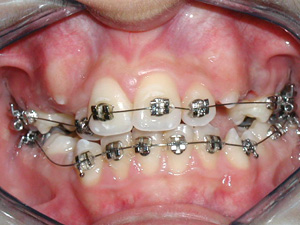
Jaw closure disorders, often referred to as malocclusion, refer to misalignments in the bite, which can create both aesthetic and functional problems. People often seek orthodontic treatment to address these issues, as they can affect both the appearance of the teeth and the ability to chew properly. Additionally, individuals with jaw closure disorders may have difficulty maintaining proper oral hygiene, leading to increased risk of tooth decay and gum inflammation.
Common Types of Jaw Closure Disorders:
-
Crossbite:
- Occurs when one or more teeth are positioned incorrectly, either inside or outside the arch of the opposing teeth. It may be a single tooth or multiple teeth affected.
- This can cause issues such as tooth wear, gum recession, or jaw problems.
-
Crooked Teeth:
- When teeth do not align properly, they may appear crooked or misaligned.
- This can lead to both aesthetic concerns and functional problems, such as difficulty in chewing or speaking.
-
Deep Bite (Overbite):
- A condition where the upper front teeth overlap the lower front teeth excessively.
- It can cause wear on the teeth, jaw pain, and difficulty biting or chewing.
-
Open Bite (in Front Teeth):
- Occurs when the front teeth do not meet when the mouth is closed.
- This can affect speech, chewing, and even cause jaw discomfort.
-
Jaw Narrowing and Other Orthopedic Anomalies:
- When the jaw structure is too narrow, it may lead to crowding of teeth or misalignment.
- This type of anomaly may require early intervention to avoid long-term problems.

 Türkçe
Türkçe English
English

Contact Form